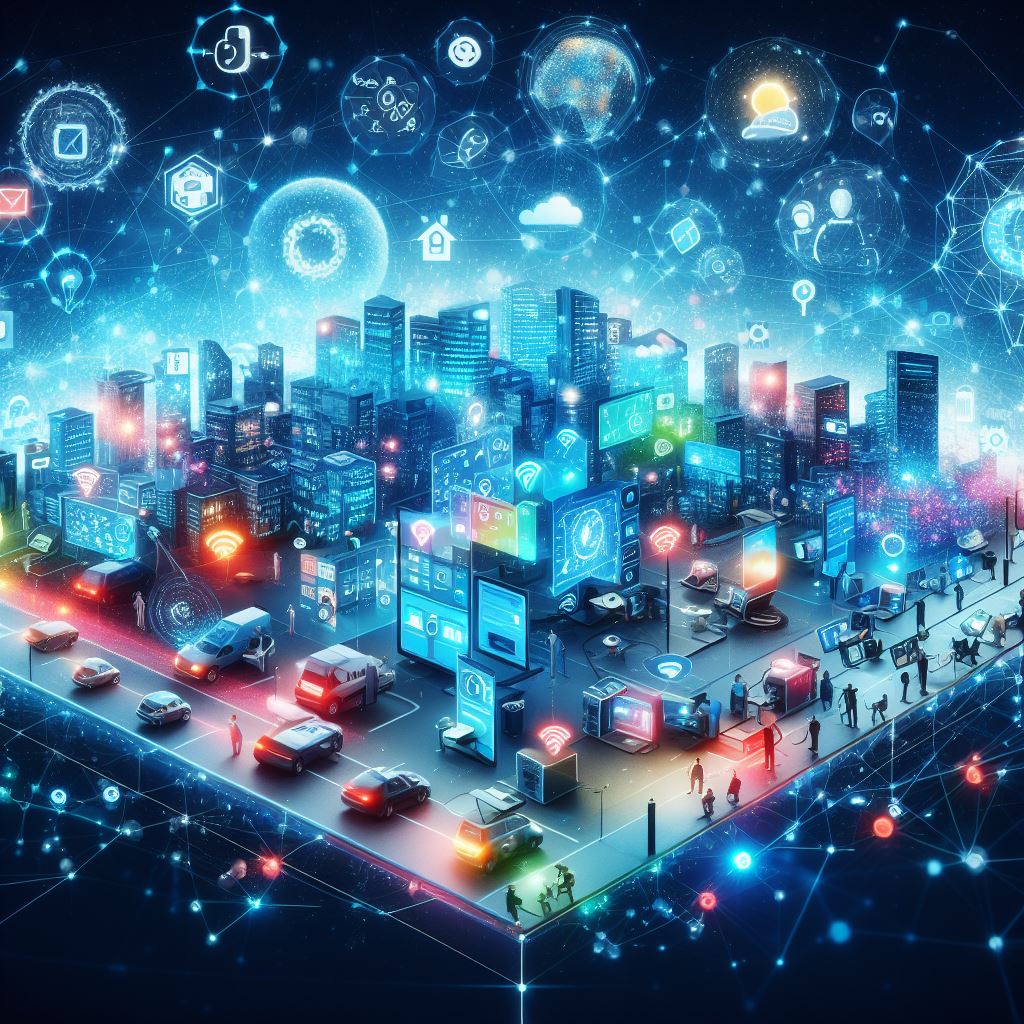
Unlocking Data Potential: Edge Computing Insights
Introduction
In an era characterized by a voluminous surge in data, businesses and technical experts, such as IT professionals, data scientists, and IoT developers, traverse through the sophisticated labyrinth of technological advancements. Edge computing emerges as a cardinal player in navigating through this data-intense environment, presenting a paradigm that is shifting the axles of data processing and management.
What is Edge Computing?
Edge computing, alternatively acknowledged as peripheral computing, refers to the methodology where data processing (or data analysis) takes place nearer or at the data source, rather than relying on a centralized data center – often leveraging edge data centers or edge devices. This architectural shift aims to plummet latency, conserve bandwidth, and thus, enhance the efficiency of data processing for IoT devices.
Defining Principles of Edge Computing
Edge computing relies on a few foundational principles:
- Proximity: Processing data close to the source of data generation.
- Reduced Latency: Minimizing the time taken to process data.
- Bandwidth Efficiency: Optimizing the use of network resources.
- Security: Establishing secure channels and storage for data processing.
Edge vs. Cloud: A Comparative Examination
Navigating through the technical corridors, it is paramount to draw a comparison between edge computing and its centralized counterpart – cloud computing. While both domains cater to data storage and processing, the underlying principles and applications depict substantial differences.
- Data Processing Proximity: Edge computing decentralizes data processing, bringing it closer to data generation sources, contrasting with cloud computing, which is centralized.
- Latency: Edge significantly reduces data travel distance, thus reducing latency, whereas cloud computing might be subject to delays due to the data travel distance.
- Security: Edge computing allows for localized data processing, potentially mitigating data security threats pertinent in cloud computing where transmission is involved.
- Bandwidth Utilization: Edge optimizes bandwidth by minimizing data travel through the network, as opposed to cloud computing that might utilize substantial bandwidth for data transmission.
"Edge computing represents a tectonic shift, addressing the pitfalls of latency and data management in a hyper-connected world." – Prof. Wei Shi, Expert in Edge Computing, IEEE
Delving into Benefits and Challenges
Navigating through edge computing encapsulates maneuvering through its myriad of benefits and challenges:
Benefits in Data Processing
- Enhanced Real-time Data Analysis: Minimized latency enables faster, real-time data analysis.
- Optimized Bandwidth Usage: Localized data processing mitigates extensive data transmission through the network.
- Reliability: Independence from centralized data centers enhances reliability and minimizes downtime.
- Scalability: Edge solutions can be incrementally expanded, adapting to data-intensive applications like those seen in IoT devices.
Challenges Encountered
- Security Concerns: Managing secure data processing at multiple locations becomes complex.
- Implementation Costs: Initial setup and implementation of edge solutions may incur significant costs.
- Technical Expertise: Developing and maintaining edge computing environments demand specialized knowledge.
- Data Consistency: Ensuring data consistency across various edge locations can be a challenge.
A Lens into Real-World Applications: Case Studies
Case Study 1: Edge in Healthcare
A pioneering instance of edge computing is perceptible in the healthcare sector, wherein real-time data processing is indispensable. Edge computing facilitates immediate analysis of patient data, thereby expediting diagnosis and treatment.
- Impact: Reduction in latency ensured faster access to patient data and enhanced timely medical interventions.
- Challenge: Ensuring the security and privacy of sensitive patient data across edge data centers was paramount.
Case Study 2: Edge in Autonomous Vehicles
The automotive sector, especially in the context of autonomous vehicles, leverages edge computing to process voluminous data from numerous sensors in real-time.
- Impact: Enhanced vehicular safety and optimized operational efficiency by enabling instantaneous decision-making.
- Challenge: Ensuring consistent, uninterrupted data processing to avoid mishaps and enhance reliability.
Future Trends and Projections
Looking toward the horizon, edge computing is envisioned to intertwine more profoundly with IoT devices, artificial intelligence, and blockchain, establishing a more robust, secure, and efficient data processing ecosystem.
- Integration with 5G: Leveraging the low latency and high speeds of 5G to further boost edge computing capabilities.
- IoT Expansion: Furthering the complexity and capacity of IoT devices by integrating advanced edge computing technologies.
- Enhanced Security Protocols: Developing advanced security protocols to safeguard data and applications in edge computing environments.
- Hybrid Models: Adopting hybrid models incorporating both edge and cloud computing to optimize data processing frameworks.
Edge Security: A Pivotal Concern
Data security in edge computing, particularly considering the distributed nature of data processing, warrants scrupulous attention and strategic intervention. Mitigation strategies incorporate:
- Localized Security Protocols: Implementing stringent security protocols at each edge data center.
- Data Encryption: Ensuring data, while in transit and at rest, is encrypted and secure.
- Regular Audits: Conducting periodic security audits to identify and rectify vulnerabilities.
- Compliance Adherence: Ensuring that edge data processing adheres to regional and international data protection regulations.
In conclusion, edge computing stands at the forefront of a technological revolution, metamorphosing data processing, and management paradigms. Addressing the stipulated challenges and aligning with future trends, businesses, and IT experts can harness the potent capabilities of edge computing, maneuvering through the data-intensive landscapes of the modern world.
References:
- Shi, W., Cao, J., Zhang, Q., Li, Y., & Xu, L. (2016). Edge computing: Vision and challenges. IEEE Internet of Things Journal, 3(5), 637-646.
- Satyanarayanan, M., Bahl, P., Caceres, R., & Davies, N. (2009). The case for VM-based cloudlets in mobile computing. IEEE Pervasive Computing.
- Chiang, M., & Zhang, T. (2016). Fog and IoT: An overview of research opportunities. IEEE Internet of Things Journal, 3(6), 854-864.






